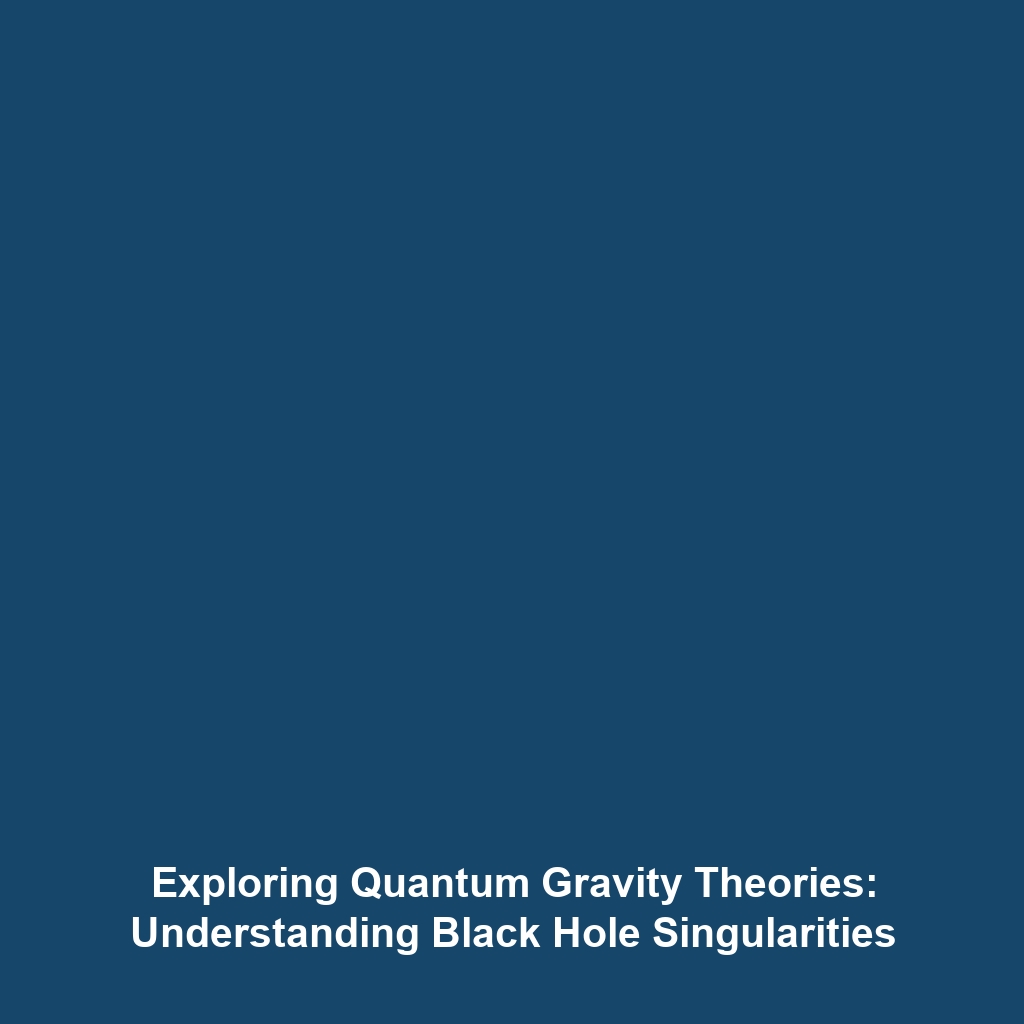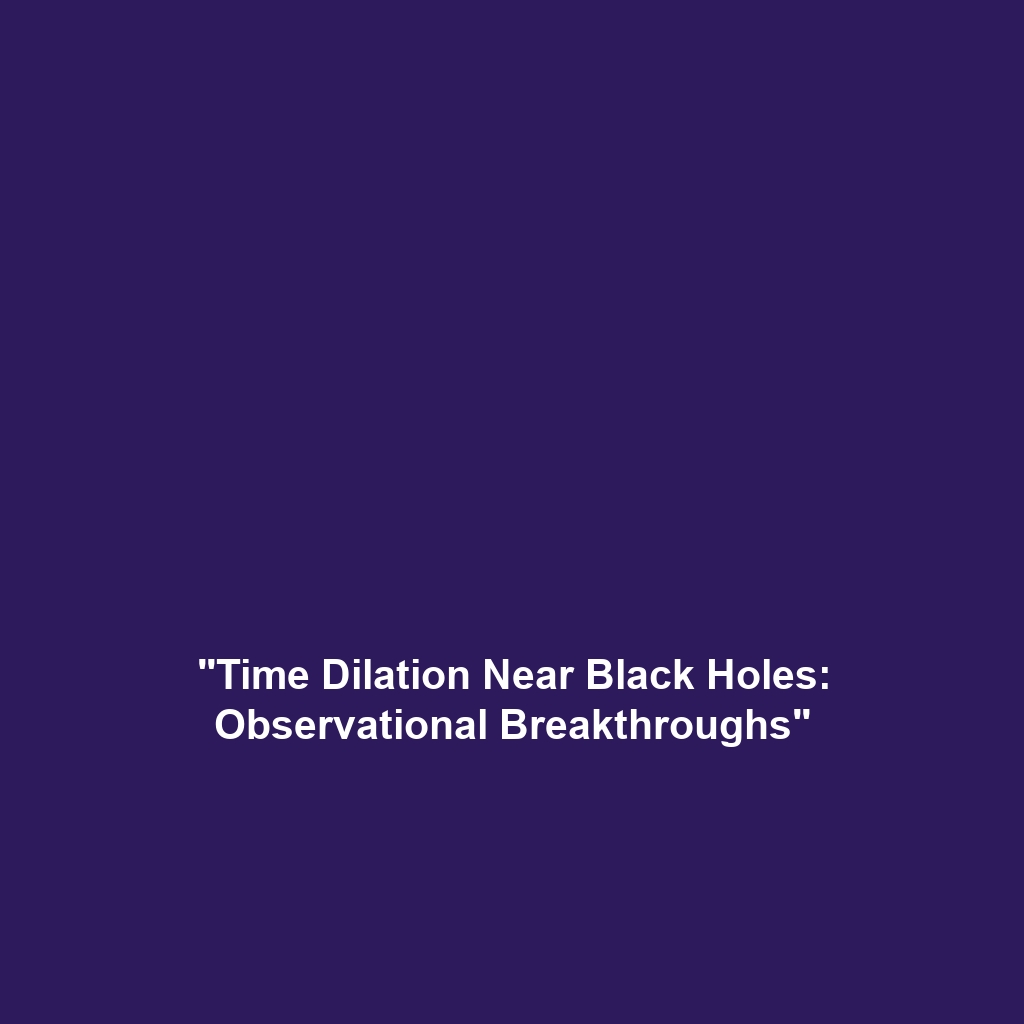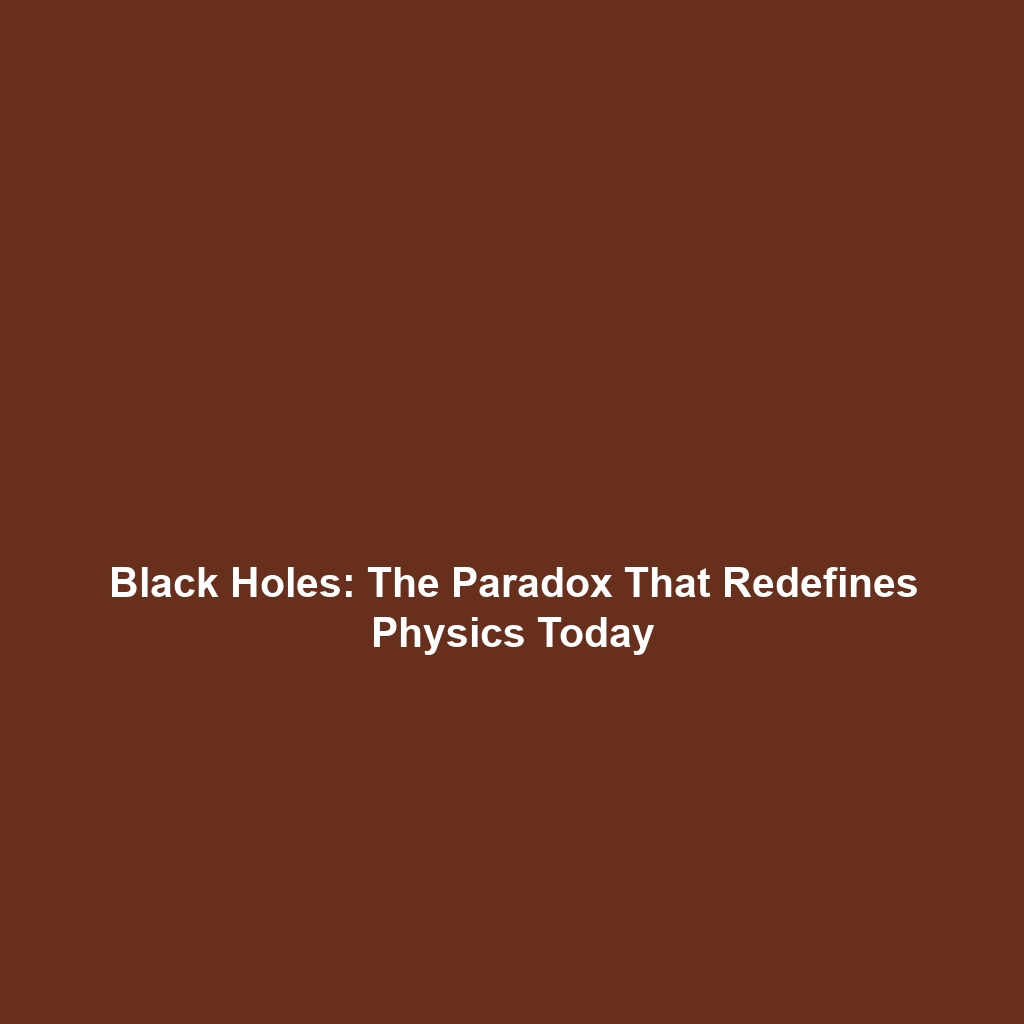<>
Quantum Gravity Theories Aiming to Explain Singularities in Black Holes
Introduction
Quantum gravity theories aim to bridge the gap between general relativity and quantum mechanics, addressing one of the most profound puzzles in modern physics: singularities in black holes. Singularities are points in spacetime where gravitational forces overwhelm all known laws of physics, leading to infinite density and curvature. Understanding these complex phenomena is crucial for unveiling the mysteries of black holes, which are among the universe’s most enigmatic structures. In this article, we will explore the various quantum gravity theories that seek to explain these singularities, highlighting their significance in our understanding of black holes.
Key Concepts
Understanding Singularities
A singularity occurs when matter is compressed to an infinitely small point, where conventional physics fails to describe the conditions. In black holes, the singularity is typically hidden behind an event horizon, making it inaccessible to observation. This incompleteness in our understanding necessitates the development of quantum gravity theories.
Theories of Quantum Gravity
Several theories have been proposed to understand how quantum mechanics and gravity interact at the singularity:
- Loop Quantum Gravity (LQG): This theory suggests that spacetime is quantized, potentially eliminating singularities entirely by introducing a discrete structure.
- String Theory: Proposes that fundamental particles are one-dimensional ‘strings,’ and that dimensions beyond the observable universe could play a role in preventing singularities.
- Black Hole Complementarity: Suggests that different observers may perceive information about singularities differently, possibly supporting the idea of multiple realities.
Applications and Real-World Uses
The theoretical advancements in quantum gravity not only contribute to fundamental physics but also have implications for various fields:
- Cosmology: Insights into singularities could influence models of the universe’s birth and evolution.
- Quantum Computing: Concepts from quantum gravity might inspire new computational paradigms by leveraging the principles of quantum entanglement.
- Astrophysics: Understanding black hole formation and their role in galaxy evolution is crucial for modern astrophysical research.
Overall, the applications of quantum gravity theories enrich our understanding of black holes and the cosmos at large.
Current Challenges
Despite the promise shown by quantum gravity theories, several challenges persist:
- Lack of Experimental Evidence: Many quantum gravity theories remain untested due to the extreme conditions near singularities.
- Theoretical Discrepancies: Conflicts between predictions of different theories pose hurdles in developing a unified model.
- Mathematical Complexity: The equations governing these theories are often prohibitively complex, limiting their practical application.
These challenges underscore the ongoing quest to understand singularities within the context of black holes.
Future Research and Innovations
Research into quantum gravity and singularities is rapidly evolving, with several promising avenues:
- Advancements in Quantum Field Theory: Novel approaches in quantum field theory may lead to breakthroughs that clarify the nature of singularities.
- Gravitational Wave Astronomy: The detection of gravitational waves provides new data that could improve our understanding of black holes and their singularities.
- Technological Innovations: Next-generation telescopes and particle accelerators are expected to shed light on high-energy phenomena linked to black holes.
These developments not only enhance theoretical physics but also pave the way for future innovations in related fields.
Conclusion
Quantum gravity theories aiming to explain singularities represent a significant frontier in our understanding of black holes. By investigating these complex interactions, scientists hope to unravel one of the universe’s greatest mysteries. As research progresses, the implications could expand our perception of space, time, and the very fabric of reality. For further reading, explore our articles on black holes and quantum mechanics for a deeper understanding of these fascinating concepts.








